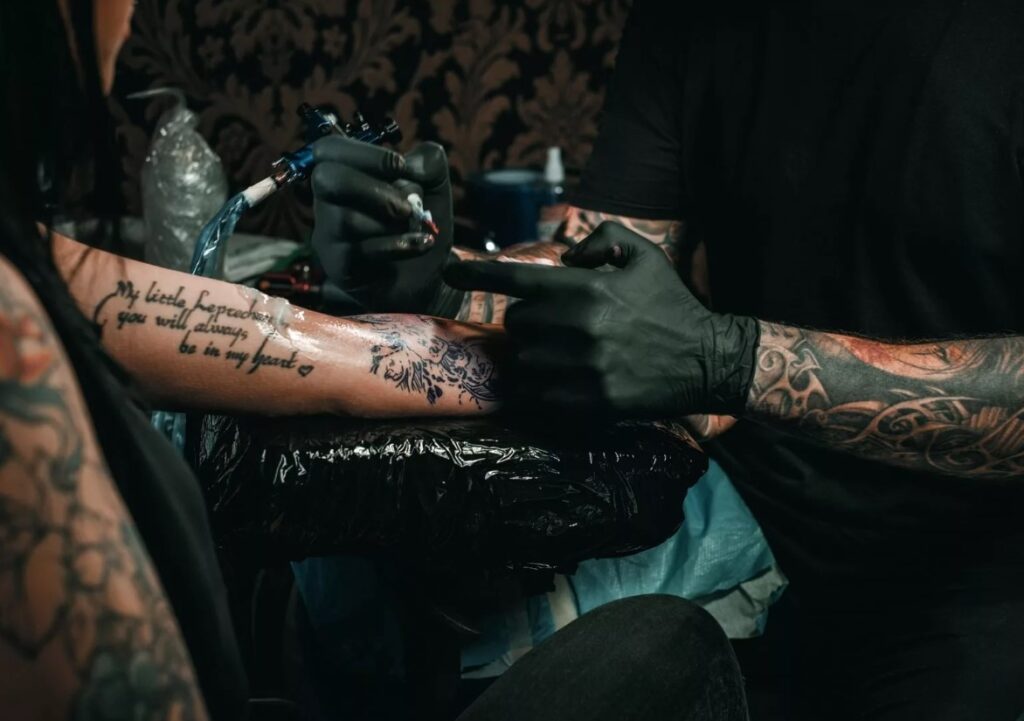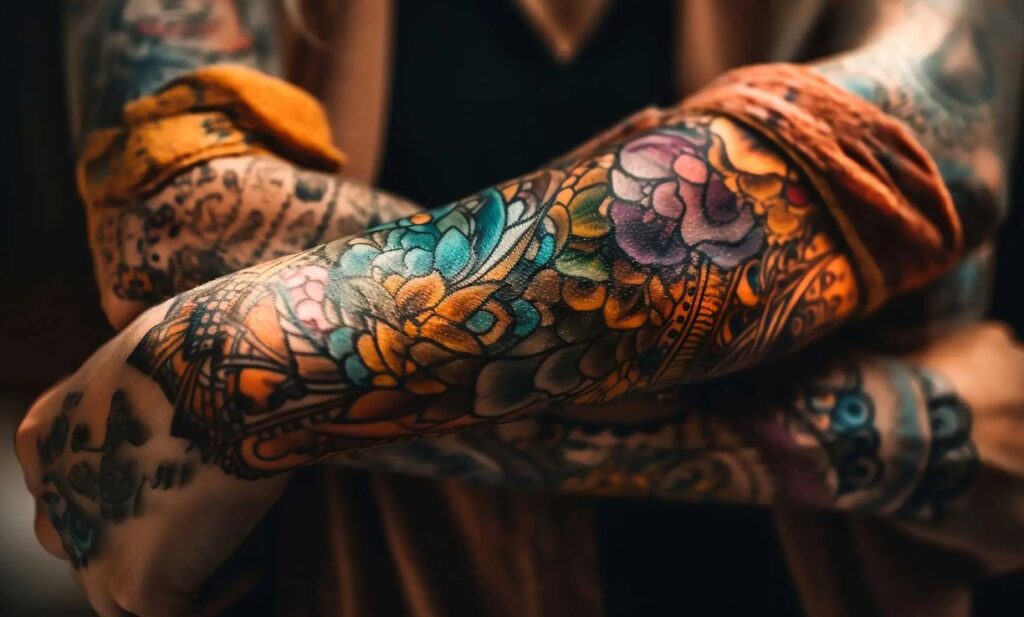Tattoos are a popular form of self-expression, allowing individuals to carry meaningful symbols, art, or messages on their bodies. However, the decision to get a tattoo should not be taken lightly, as mistakes can lead to regret and dissatisfaction. Understanding common tattoo errors and learning how to avoid them is essential for ensuring a positive experience and a lasting piece of art.
One of the most significant mistakes people make is rushing the decision-making process. It’s crucial to take the time to research designs, artists, and studios. Choosing a tattoo that holds personal meaning is vital, as trends fade and what seems appealing today may not resonate in the future. Additionally, trusting the right artist who aligns with your vision while possessing the necessary skills is paramount.
In this article, we will explore the common pitfalls associated with tattoos, from poor design choices to inadequate aftercare. We will provide practical tips to help you navigate the tattoo journey, ensuring that your body art not only looks beautiful but also stands the test of time. By arming yourself with knowledge, you can avoid potential regrets and enjoy your tattoo for years to come.

Choosing the Wrong Artist
One of the most critical decisions you will make when getting a tattoo is selecting the right artist. A poor choice can lead to dissatisfaction, regret, and, in some cases, costly cover-ups or removals. Here are some key factors to consider when choosing your tattoo artist.
Research and Portfolio Review
Always start by researching potential artists in your area. Look for their portfolios, which should showcase a variety of styles and previous work. An artist’s portfolio provides insight into their skill level, creativity, and consistency. If you find that an artist primarily specializes in a style different from what you want, it’s best to look elsewhere.
Additionally, read reviews and testimonials from previous clients. Feedback can reveal an artist’s professionalism, hygiene practices, and overall experience. Take your time to ensure you select someone who aligns with your vision.
Communication and Comfort
Once you have narrowed your choices, schedule a consultation. This meeting is vital; it allows you to discuss your tattoo ideas and assess the artist’s understanding of your vision. Pay attention to how they respond to your questions and whether they offer constructive feedback. Good artists will take the time to listen to your concerns and provide valuable input to ensure your tattoo not only looks great but is also placed correctly.
Your comfort level is crucial as well. A tattoo session can be lengthy, and feeling at ease with your artist contributes to a positive experience. Trust your instincts; if you feel uncomfortable or dismissed during the consultation, consider choosing someone else.
In summary, avoiding the mistake of choosing the wrong artist hinges on thorough research, reviewing their portfolio, and ensuring effective communication and comfort. Taking these steps will significantly increase your chances of getting a tattoo you will love for years to come.
Ignoring Aftercare Instructions
Aftercare is a crucial part of the tattoo process that ensures proper healing and maintains the quality of the artwork. Many individuals, however, overlook aftercare instructions, leading to various complications. Ignoring these guidelines can result in fading, infection, and other skin issues that may mar the tattoo.
Following aftercare instructions helps to minimize the risk of complications. Artists provide tailored advice based on the tattoo’s location, size, and individual skin types. Neglecting these recommendations can lead to unintended outcomes, as every tattoo requires specific attention to detail during its healing phase.
Common aftercare mistakes include excessive moisture, prolonged exposure to sunlight, and lack of cleaning. These errors can cause the tattoo to heal improperly or not at all, often resulting in the need for touch-ups or even complete rework. For example, wet healing techniques involve keeping the tattoo moist, whereas dry healing requires keeping the tattoo clean and dry. Failing to follow the specified method can lead to infection or irritation.
Understanding the importance of aftercare can significantly affect the longevity and appearance of a tattoo. Proper feeding of the skin with the right ointments, avoiding picking or scratching, and maintaining hygiene can lead to a vibrant and clear design that stands the test of time.
| Aftercare Mistakes | Possible Consequences |
|---|---|
| Ignoring cleaning instructions | Increased risk of infection |
| Exposing tattoo to sunlight | Fading and discoloration |
| Using scented products | Skin irritation and allergic reactions |
| Picking at the tattoo | Scarring and patchy healing |
| Over-moisturizing | Excessive scabbing and delayed healing |
In conclusion, adhering to aftercare instructions is paramount for anyone looking to maintain the integrity of their tattoo. By taking the time to understand and follow these guidelines, individuals can ensure that their tattoos heal beautifully and remain as intended for years to come.
Opting for a Temporary Tattoo Design

Choosing a temporary tattoo design can be a smart decision for those uncertain about permanent ink. Temporary tattoos provide the flexibility to test out designs without a long-term commitment, helping you gauge your interest and attachment to a particular design.
Benefits of Temporary Tattoos
One of the main advantages of temporary tattoos is the opportunity for experimentation. You can try various styles, colors, and placements on your body. This allows you to explore your preferences without the anxiety of making a lifelong choice. Additionally, temporary tattoos are ideal for special occasions, festivals, or events where you might want to enhance your look without the permanence of traditional tattoos.
How to Choose the Right Temporary Tattoo
When selecting a temporary tattoo, consider designs that resonate with your personality and lifestyle. Take the time to explore different application methods, such as water transfer, airbrush, or henna, as each offers a unique look and feel. Make sure to check the quality of the materials used to ensure skin safety and longevity of the design. Finally, think about placement; some areas of the body are more visible and may affect how you feel about the tattoo. Analyze these aspects carefully to ensure that your temporary tattoo experience aligns with your expectations.
Focusing Solely on Trends
One of the most common mistakes people make when getting tattoos is focusing solely on current trends. While it may seem appealing to get a design that is popular at the moment, such choices often lack personal significance and can lead to regret over time. Trends can be fleeting, and what looks fashionable today might feel outdated tomorrow.
Understanding Personal Significance
Instead of merely following trends, it is essential to choose a design that resonates with your personal story or values. A meaningful tattoo can serve as a constant reminder of experiences or beliefs that have shaped you. When you invest time in thinking about the significance behind your tattoo, you are more likely to be satisfied with your choice even as styles evolve.
Researching Long-term Popularity
If you are drawn to certain trends, research their longevity in the tattoo community. Some designs, like classic symbols or timeless motifs, have stood the test of time and are less likely to be seen as dated. Engage with tattoo artists and enthusiasts to gain insights into what has remained popular over the years and consider blending elements of current trends with timeless designs for a more personalized approach.
Underestimating the Pain Factor
One of the most common mistakes when considering a tattoo is underestimating the pain involved in the process. Many first-timers assume that since tattoos are a form of body art, the experience will be relatively painless. However, this misconception can lead to unexpected discomfort and even regrets.
The level of pain during a tattoo can vary greatly based on several factors:
- Location on the body: Certain areas, such as the ribs, spine, or elbows, are generally more sensitive due to the proximity of bones and nerve endings. In contrast, fleshy areas like the upper arm or thigh tend to be less painful.
- Size and detail of the tattoo: Larger tattoos or those with intricate details may require longer sessions, which can increase overall discomfort. Multiple sessions can also amplify the sensation of pain over time.
- Individual pain tolerance: Everyone has a different threshold for pain. While some may find the experience bearable, others may struggle significantly. Understanding your own pain tolerance is crucial.
To approach the tattoo experience more realistically, consider the following tips:
- Research pain levels: Look for information about the specific area where you plan to get tattooed. Online forums and reviews can offer insights from others who have had similar experiences.
- Prepare yourself mentally: Acknowledge that some pain is likely unavoidable. Preparing yourself mentally can help you cope better during the tattooing process.
- Talk to your tattoo artist: Discuss any concerns about pain with your artist. They can provide tips on managing discomfort and may suggest techniques to minimize pain during the session.
- Consider pain management options: Some individuals may benefit from topical numbing creams or other pain relief methods. Consult with your tattoo artist about appropriate options.
Ultimately, understanding and preparing for the pain associated with getting a tattoo is an important step in ensuring a positive and meaningful experience. By taking the necessary precautions and being fully aware of what to expect, you can make the process smoother and more enjoyable.
Not Researching Tattoo Locations
Choosing the right location on your body for a tattoo is as crucial as selecting the design itself. Failing to research tattoo locations can lead to regret, discomfort, or even complications in the future. First, consider the visibility of the tattoo. Placement on highly visible areas, such as the hands or neck, may impact your personal and professional life. For example, some workplaces have strict policies against visible tattoos, which could limit your career opportunities.
Next, think about the pain level associated with different body parts. Areas with less flesh and more bones, like the ribs or elbows, typically experience more pain during the tattooing process. Conversely, fleshier areas like the thigh may be more tolerable. Understanding your pain tolerance beforehand can help you make a more informed decision.
Additionally, consider the changing nature of skin. As you age, your skin will naturally lose elasticity and may change in appearance. Areas prone to stretching, such as the abdomen or underarms, may not hold the tattoo as well over time. Researching how specific locations can affect the longevity and appearance of your tattoo is essential.
Another important aspect to evaluate is lifestyle. If you engage in activities like sports or have frequent exposure to the sun, you may need to choose a location that is less likely to be affected by wear and tear. Areas that often rub against clothing or experience friction may cause the tattoo to fade faster or become distorted.
Finally, consult with a professional tattoo artist regarding location options. They can provide insights based on your desired design and body type, ensuring you achieve the best results. Taking the time to thoroughly research and reflect on these factors will help you avoid potentially painful and regrettable tattoo placement decisions in the future.
Forgetting About Allergies and Skin Sensitivities
When considering getting a tattoo, one critical aspect that can be easily overlooked is the presence of allergies and skin sensitivities. Many individuals are unaware that they have an allergy to certain inks, pigments, or even the metals used in tattooing equipment. This oversight can lead to complications that may not only affect the healing process but also result in long-term skin issues.
Understanding Common Allergens
The most common allergens related to tattoos include pigments, particularly red ink, which often contains metals like mercury and cadmium. Additionally, some individuals may react to the adhesives used in the stencil application process. It is essential to perform a patch test with the ink before committing to a full tattoo. By applying a small amount of the ink to a discreet area of the skin and monitoring it for any adverse reactions over 24 to 48 hours, you can significantly reduce the risk of a severe allergic response.
Consulting with a Professional
Before getting a tattoo, it is vital to consult with a qualified tattoo artist and discuss your skin sensitivities or allergies openly. A professional artist can suggest hypoallergenic inks or techniques that minimize irritation. Furthermore, they can provide guidance on aftercare to ensure your skin heals appropriately and remains healthy. Staying transparent about your skin history can also save you from potentially painful experiences down the line.
Considering allergies and skin sensitivities before getting a tattoo is crucial for ensuring a safe and enjoyable experience. Taking precautions can prevent allergic reactions, saving time, money, and discomfort in the long run.
Rushing the Decision-Making Process
One of the most significant mistakes individuals make when getting a tattoo is rushing the decision-making process. This can lead to regret and dissatisfaction with the chosen design, placement, or even the artist. Taking the time to think through every aspect of your tattoo is crucial for ensuring that it aligns with your personal values and aesthetic preferences.
Evaluate Your Design Choices
Before committing to a tattoo, thoroughly evaluate your design options. Consider its meaning, relevance to your life, and how it may be perceived by others. A design that feels perfect today might not resonate the same way in a few years. It’s beneficial to create a shortlist of potential designs and allow yourself a cooling-off period to see how you feel about them over time.
Selecting the Right Artist
Choosing the right tattoo artist is just as important as the tattoo design itself. Rushing to select an artist based on proximity or cost can result in subpar work and make you regret your decision. Take the time to research artists, review their portfolios, and read client testimonials. Meeting with the artist beforehand can also help you gauge their professionalism and skill level, ensuring your tattoo experience is positive and the result meets your expectations.
Neglecting to Check Health Standards

One of the most critical aspects of getting a tattoo is ensuring that the studio and artist adhere to proper health and safety standards. Neglecting this can lead to serious health complications, including infections and long-term skin problems.
When considering a tattoo, it is essential to evaluate the cleanliness and professionalism of the tattoo parlor. Here are some key factors to consider:
- Licensing and Certification: Verify that the tattoo studio holds the necessary licenses and certifications. This indicates compliance with local health regulations.
- Hygiene Practices: Check if the artists use disposable needles and gloves. Reputable studios prioritize sterile equipment to prevent cross-contamination.
- Workplace Cleanliness: Observe the overall cleanliness of the studio. Work surfaces should be sanitized regularly, and the workspace should not be cluttered.
- Artist Training: Ensure that the tattoo artist has received proper training in health standards and hygiene. Knowledge in preventing infections is crucial for safe tattooing.
- Aftercare Guidance: The studio should provide detailed aftercare instructions. Proper aftercare is essential for preventing infections and ensuring the tattoo heals well.
Ignoring these health standards can lead to complications such as:
- Infections: Bacterial infections can occur if non-sterile equipment is used.
- Allergic Reactions: Poor-quality inks or improper application can cause allergic reactions.
- Scarring: Improper technique or aftercare can result in scarring or skin damage.
- Long-term Health Issues: Serious infections may lead to systemic issues requiring medical attention.
In conclusion, prioritizing health standards when getting a tattoo cannot be overstated. Taking the time to research and select a reputable tattoo studio will significantly reduce the risk of complications and ensure a safe and positive tattoo experience.
Failing to Plan for Removal Options
One critical mistake many people make when getting a tattoo is failing to consider potential removal options in advance. Tattoos are generally considered permanent, and while advancements in technology have made removal more feasible, it is not without its challenges and costs. Understanding the available removal methods can prevent regrets and offer peace of mind before committing to body art.
Common removal options include laser tattoo removal, dermabrasion, and excision. Laser removal is the most popular and effective method, utilizing concentrated light beams to break down ink particles in the skin. However, this process can take multiple sessions and may not be suitable for all skin types or ink colors. Additionally, it can be expensive and time-consuming, often requiring careful aftercare to avoid complications.
Dermabrasion involves physically sanding down the top layers of skin to remove the ink, but this method can lead to scarring and longer recovery times. Excision, where the tattooed skin is surgically removed, may be appropriate for smaller tattoos but leaves permanent scars. Not all tattoo artists are well-versed in removal options, so prospective tattoo owners should seek advice from professionals knowledgeable about various methods and their implications.
Considering future removal options before getting a tattoo can influence placement, size, and design choices. Individuals should reflect on the longevity of their tattoo’s significance and how they might feel in the years to come. Consulting with both tattoo artists and removal specialists can provide insights on managing any future regrets and making more informed decisions.
Furthermore, it’s crucial to research the potential permanence of the ink used, as some inks are more difficult to remove than others. Not considering these factors can lead to regret and a costly, painful removal process. Ultimately, planning for removal options is an essential part of the tattoo decision-making process that can save individuals significant emotional and financial stress down the line.
Q&A:
What are some common mistakes people make when getting a tattoo?
Many individuals make the mistake of choosing a design on impulse without considering its long-term significance. Others may overlook the importance of selecting a skilled tattoo artist, which can lead to unsatisfactory results. Additionally, not researching the tattoo shop’s hygiene standards is a frequent oversight. It’s also common for people to rush their decisions about placement and size, which can affect both the visibility and the impact of the tattoo.
How can I ensure that my tattoo artist is reputable and skilled?
To find a reputable tattoo artist, start by checking their portfolio to review their previous work. Ask for recommendations from friends or family who have tattoos. Reading online reviews can be helpful as well. When visiting the shop, observe the cleanliness of the space and ask about the artist’s experience, including how long they’ve been tattooing and if they have any certifications. Don’t hesitate to ask questions about their techniques and aftercare practices to gauge their expertise.
What factors should I consider when choosing a tattoo design?
Choosing a tattoo design requires careful thought. Start by contemplating what the tattoo represents and its significance to you. Think about the size and placement on your body, as these will affect how often it is seen. Consider the style you prefer, whether it’s traditional, tribal, realism, or something abstract. Research various designs and take your time to visualize how the tattoo will fit your personality and lifestyle, as it will be a permanent addition to your body.
Are there any aftercare mistakes I should avoid after getting a tattoo?
Yes, aftercare is crucial for healing and ensuring the tattoo looks its best. A common mistake is skipping the aftercare routine recommended by your artist or leaving the bandage on for too long. It’s important not to overmoisturize, as this can suffocate the skin and lead to infections. Avoid exposing the tattoo to direct sunlight, pools, or hot tubs during the initial healing process. Always wash your hands before touching the tattoo and use gentle, fragrance-free soap for cleaning.
How can I avoid regretting my tattoo in the future?
To minimize the chances of regretting a tattoo, take your time before deciding. Spend time thinking about the design, its meaning, and whether it aligns with your personal values. Discuss it with trusted friends or family to gain different perspectives. Remember that tattoos are permanent, so choosing something that holds lasting significance to you is key. If you find yourself second-guessing, it may be wise to wait and revisit the idea later rather than rushing into a decision.
What are some common tattoo mistakes people make before getting inked?
Many individuals make several mistakes prior to getting a tattoo, which can result in regret or dissatisfaction. One common error is not conducting adequate research on the tattoo artist’s background, qualifications, and portfolio. It’s crucial to choose an artist whose style aligns with your vision and who maintains good hygiene practices. Another mistake is not thoroughly considering the design itself, leading to impulsive decisions that may not hold personal significance. Additionally, overlooking aftercare instructions can compromise the tattoo’s appearance and healing process.
How can I avoid making mistakes when choosing my tattoo design?
To steer clear of errors in choosing a tattoo design, it’s important to take time for reflection on the meaning of the design and how it resonates with you. Consider why you want the tattoo and what it represents in your life. Gather inspiration from various sources, such as art, nature, or personal experiences, and take notes. Sketch out ideas or consult with a professional artist who can help refine your concept. Also, it’s wise to avoid trends or fads that may not have lasting significance, as styles can shift over time. Lastly, think about placement and size; ensure it complements your body and that you’re comfortable with it being visible or hidden, depending on your preferences.
If you’re looking for a Trendy Tattoo Artist in Chicago, our studio is ready to provide unique designs and a professional approach to every tattoo.



